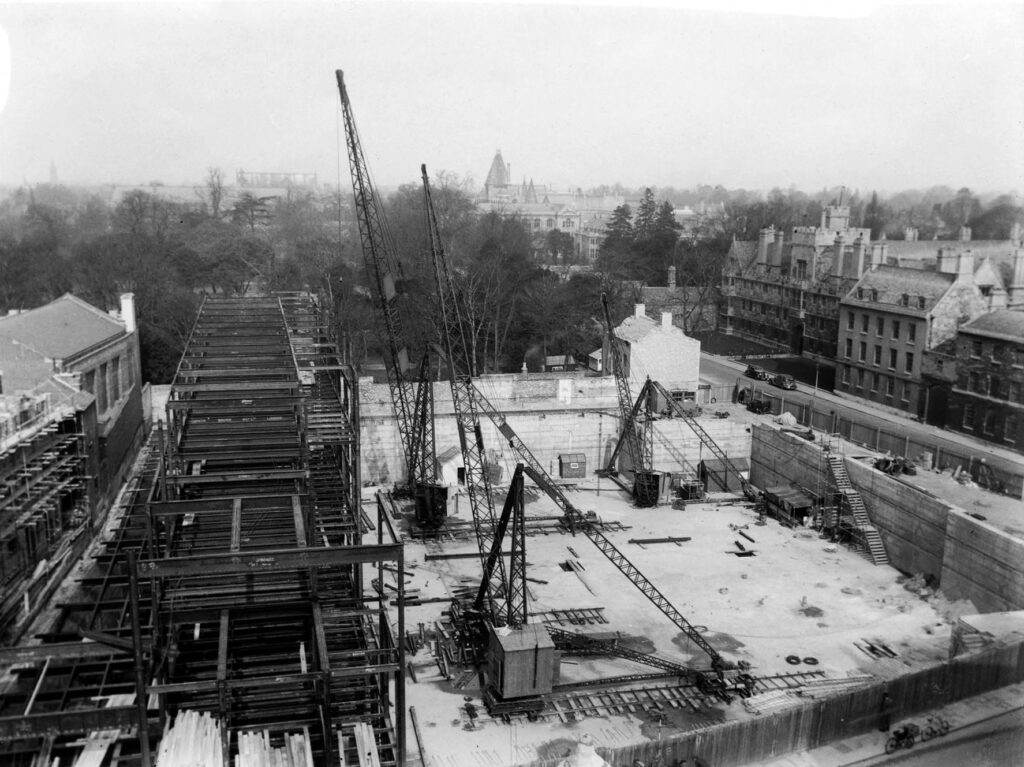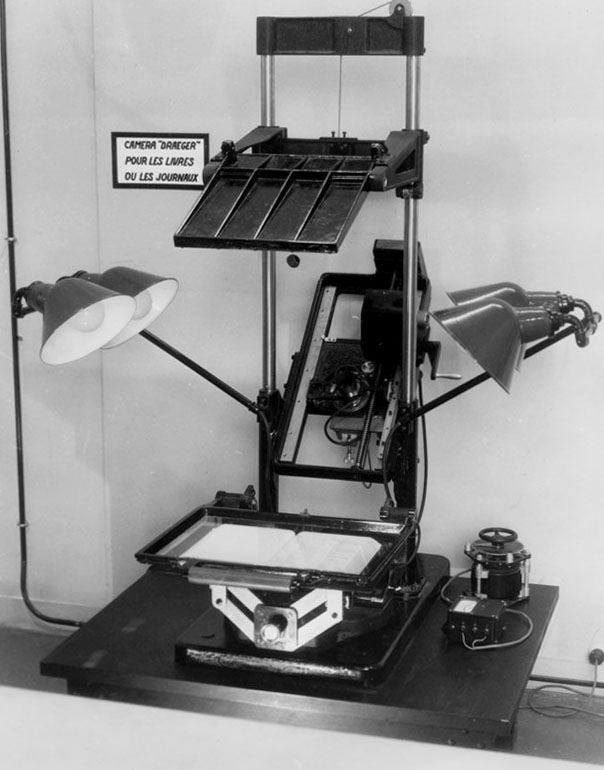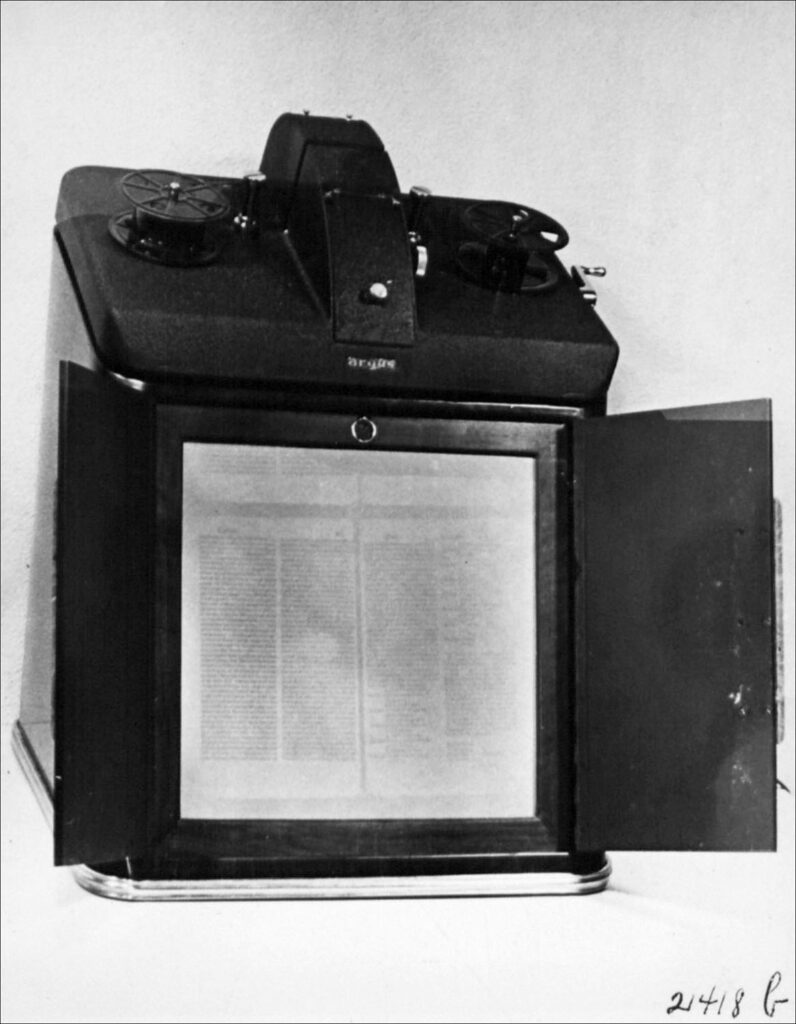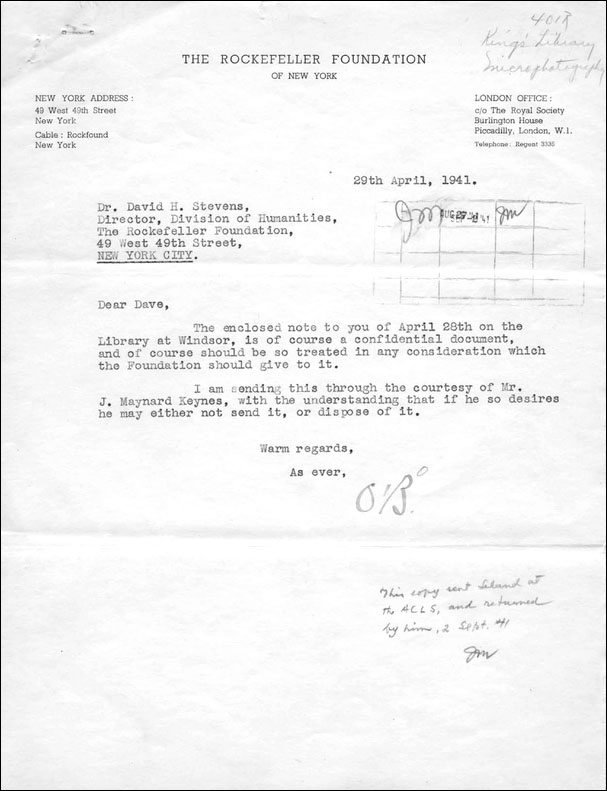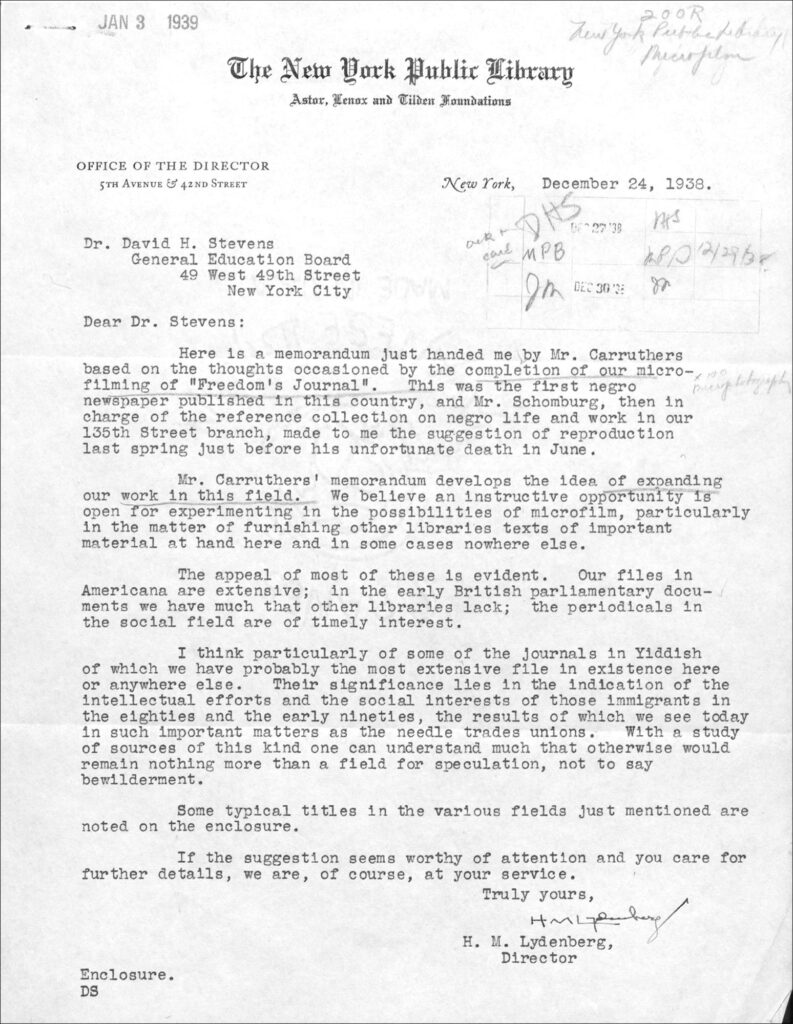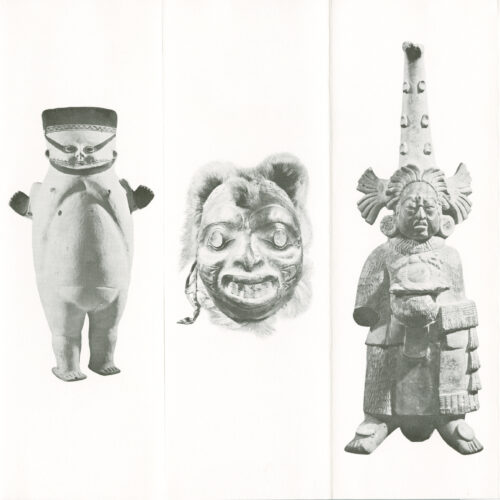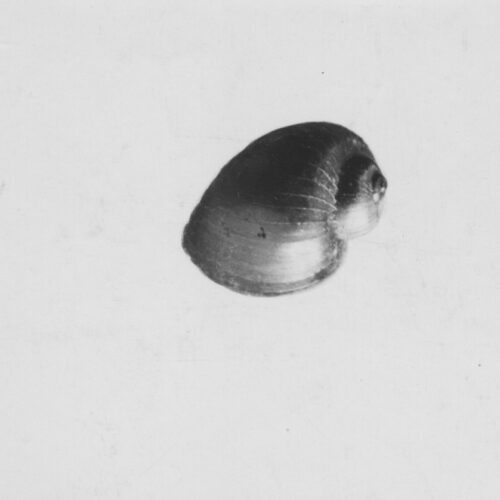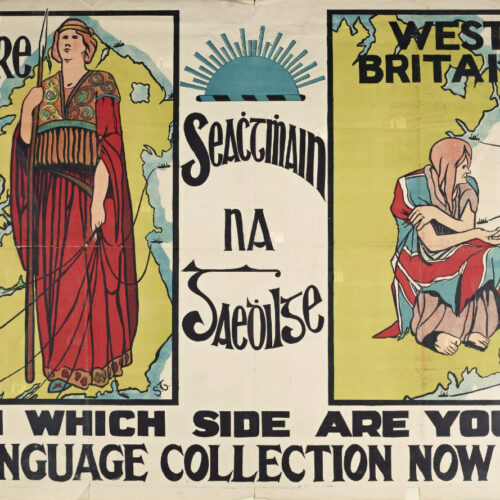“Progress Through Understanding”
When the Rockefeller Foundation reorganized in 1928, it not only changed its administrative infrastructure, but adopted a new guiding principle: “the advancement of knowledge.” This broad maxim undergirded the creation of academically-oriented divisions within the Foundation and gave program officers relatively free rein to identify and cultivate cutting-edge research. The plan’s aim, as Rockefeller Foundation President Raymond Fosdick later explained, was “progress through understanding,” particularly regarding humanity’s most perplexing, intractable social problems.Rockefeller Foundation, The Rockefeller Foundation Annual Report, 1936 (New York: Rockefeller Foundation, 1936), 8.
In the 1930s, the Rockefeller Foundation greatly expanded its work in the humanities, moving from classical interests to initiatives that broadened the scope of the humanities program and aspired to reach larger audiences. RF support for libraries (and museums) provided an important bridge between scholarly and popular audiences.
Strengthening European Libraries
The Foundation staff continued work that began under the International Education Board (IEB), which had helped to rebuild Europe’s libraries after the devastation of World War I. The Bibliothèque Nationale in Paris received several grants enabling it to complete its Catalogue Générale and to improve its collection of periodicals, which had suffered during the war years.
In 1931, Oxford University received an exceptionally large grant of $2.3 million for the expansion of the Bodleian Library (total humanities grants in the period were only about $700,000 per year), perhaps as a way of counter-balancing the Foundation’s support for scientific projects at Cambridge.
Frank Aydelotte of the Rhodes Scholarship Trust wrote to RF President George Vincent in 1929:
you have just done a big thing for science at Cambridge where science predominates, it would be a beautiful balance and fitness of things in your doing a similarly much needed service to the University of Oxford where humanistic studies predominate.“Oxford University – Bodleian Library,” Rockefeller Archive Center, RG 1.1, Series 401 R, Box 63, Folder 824.
The expanded Bodleian was opened in 1946. The library had been pressed into emergency service during World War II, forcing an interruption in construction. Objects of value were stored in the library’s underground levels, and the building served as a “nerve center” for the British Navy, a job which included use of the university press to print naval codes.“The New Bodleian Library Building,” Excerpt from Trustee Bulletin, February 1947, Rockefeller Archive Center, RG 1.1, Series 401 R, Box 63, Folder 823.
Microphotography for the Masses
New developments in library science were also funded by the humanities program. The Rockefeller Foundation gave extensive support to the development of microphotography throughout the 1930s. Microphotography, the process of photographing books and documents and producing copies on 16 or 35 millimeter film to be read through enlarging machines, was seen as the best means of preserving important international collections and improving access to them.
In making a grant to the University of Chicago in 1937 to set up its own microphotography lab, Foundation staff noted that
Microphotography provides the best present method for preserving copies of the masses of material required by scholars who work with rare books, documents, manuscripts, and newspaper files. It also enables the librarian serving them to make such material accessible.Rockefeller Foundation (RF) Resolution, December 16, 1936, Rockefeller Archive Center, RG 1.1, Series 216 R, Box 16, Folder 219.
Preserving the Past for the Future
Although the Foundation’s most obvious mandate was to fund research and technological innovation with an eye toward the future, in 1936, Rockefeller Foundation staff stepped in to preserve historical documents jeopardized by war.
Over the following decade, across the duration of World War II, the Foundation devoted more than $750,000 to the new technology of microphotography. RF grants enabled the Library of Congress, the American Library Association (ALA), and the American Council of Learned Societies (ACLS) to microfilm books, periodicals, rare documents, and academic journals. The Foundation initially embraced microfilm for its space-saving potential. It marveled that “the whole of the New York Public Library’s three million books could fit into the space now occupied by its card catalog.”“Tomorrow’s Books,” in Rockefeller Foundation Trustees’ Bulletin, 1937, November 1937, 5, Rockefeller Foundation Collection, Trustee Bulletins, Box 1, Rockefeller Archive Center.
But when rising fascism in Europe threatened to destroy an entire cultural heritage, the Foundation quickly realized that microfilm might play a far more significant role: protecting the raw materials essential to open inquiry and intellectual freedom.
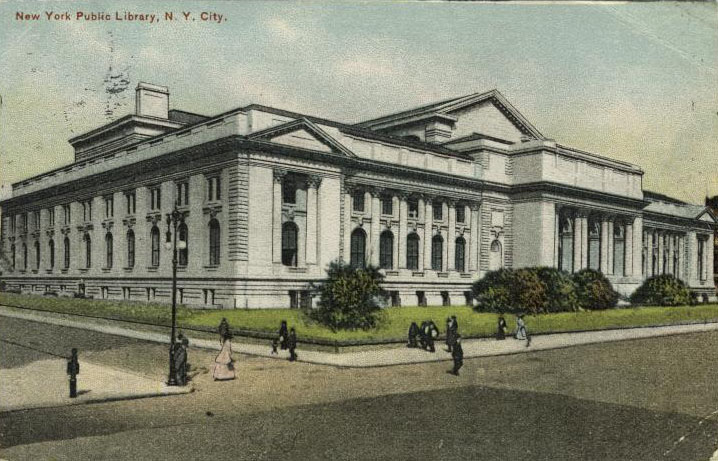
After twenty-five years of investment in European cultural institutions, universities, and scientific laboratories, to characterize the Foundation as alarmed by the Nazis’ dismantling of their work would be an understatement. “Reason is everywhere in retreat,” Fosdick lamented. “Human lives are not the only casualties in war.”Rockefeller Foundation, The Rockefeller Foundation Annual Report, 1938 (New York: Rockefeller Foundation, 1938), 47; Rockefeller Foundation, The Rockefeller Foundation Annual Report, 1941 (New York: Rockefeller Foundation, 1941), 44 He called the Foundation to action in strong words:
Each generation is the temporary trustee of the riches handed down from the past. If through our fault they are not also part of the future, posterity will brush aside any explanation which this generation can make.
Raymond Fosdick, 1943Rockefeller Foundation, The Rockefeller Foundation Annual Report, 1943 (New York: Rockefeller Foundation, 1943), 33.
In 1940, at the height of the German Blitz, an Rockefeller Foundation grant to the ACLS paid for the microfilming of the indexes of London’s Public Record Office. These papers, described as “the key to eight hundred years of British history,” included documents pertaining to Chaucer, Bacon, Cromwell, Milton, and Isaac Newton, among thousands of others.
As soon as the microfilms were complete, they were sent to the Library of Congress to provide “valuable insurance in case one of those indiscriminate Nazi bombs should smite the original file in London.”“Multiplying Books Through Photos,” in Rockefeller Foundation Trustees’ Bulletin, 1941, February 1941, 3-4, Rockefeller Foundation Collection, Trustee Bulletins, Box 2, Rockefeller Archive Center.
Human lives are not the only casualties in war.
Raymond Fosdick, 1938
Saving the King’s Collection
Microphotography proved to be especially useful during World War II, when the technology was used to preserve historic and irreplaceable items that were threatened with destruction during the bombing campaigns over England. In 1941 Daniel O’Brien of the Rockefeller Foundation’s Paris office contacted David Stevens regarding the urgent matter of the threatened collections in King’s Library at Windsor Castle. The extensive and valuable collections owned by Great Britain’s royal family were inventoried in a letter from O’Brien to Stevens.
Based on information provided by O.F. Morshead, the King’s librarian, among the holdings of the royal collection were 14,000 original drawings, including 900 by Leonardo da Vinci, as well as others by Raphael and Michelangelo; private diaries and letters of George II to George V, including material relating to the American War of Independence; and the diaries and letters of Queen Victoria.
Fearing the loss of these treasures to enemy bombing raids, O’Brien noted to Stevens,
Such a loss in many ways could be compared to the loss of some of the great libraries of the world such as the Alexandrian, and others. The hoarding of the many precious documents in the cellars seems to me a totally inadequate measure of protection.
Daniel O’Brien, April 28, 1941Letter from Daniel O’Brien to David H. Stevens, April 28, 1941, Rockefeller Archive Center, RG 1.1, Series 401 R, Box 57, Folder 750.
O’Brien went on to recommend two methods of Rockefeller Foundation support: financing the microfilming of all historical material and the construction of a tunnel to protect the originals.
These plans were partially approved. Noting that microfilming the documents and drawings of the King’s Library would also benefit American scholars, the Foundation approved plans for immediate microphotography; however, requests to fund the construction of an emergency storage tunnel were denied with John Marshall noting to Stevens that
[C]ontribution toward the storage of the Library is not our business. The British ought and perhaps can find funds for that. In fact, a tunnel is now being run into a chalk cliff for the storage of the most valuable national treasures from Windsor and from other national depositories.
John Marshall, August 19, 1941Letter from John Marshall to David H. Stevens, August 19, 1941, Rockefeller Archive Center, RG 1.1, Series 401 R, Box 57, Folder 750.
The microfilming of the King’s Library remained a top-secret wartime project that protected the King’s anonymity. In 1942, when Stevens inquired on the advisability of mentioning the project in the Foundation’s annual report, he was instructed by O’Brien to describe the project as “[m]icrofilming of historical documents in England for safe keeping” and told to “avoid specific names.”Telegram from Daniel O’Brien to David H. Stevens, February 5, 1942, Rockefeller Archive Center, RG 1.1, Series 401 R, Box 57, Folder 751.
Protecting Civil Society by Stockpiling Scholarship
As the war increasingly shut down intellectual exchange, the Rockefeller Foundation underwrote the American Library Association’s 1944 effort to stockpile and microfilm the scholarly journals of the United States for the eventual replenishment of Asian and European libraries. A bulletin to the Foundation’s trustees reminded them that book burning in Germany’s public squares had been a symbolic act.
[The] contrast between fascism and democracy [would be demonstrated by the Foundation’s] concern over the war-wrecked libraries, some of them smoking ruins, others not burned but plundered, many starved by the complete cessation of contacts with the outside world.
“Books and the International Scene,” June 1944“Books and the International Scene,” in Rockefeller Foundation Trustees’ Bulletin, 1944, June 1944, 1, Rockefeller Foundation Collection, Trustee Bulletins, Box 3, Rockefeller Archive Center.
Microfilm was anticipated to preserve the records of history and safeguard the developments of the free world. Foundation staff realized that US journals might provide the only chronicle of advances in research during these years.
Anticipating the Digital Age
It is not surprising that Rockefeller Foundation staff members were intrigued by microphotography. The Foundation’s institutional culture had embraced and promoted technologies that enabled greater efficiency, better management, and wider public access to resources. In addition to emergency projects for the war, microfilming did indeed deliver on its potential, solving problems of storage, material conservation, and distribution.
Moreover, microfilm would spark a whole new industry. The Library of Congress microfilm program grew from three staff members and 106,000 microfilm exposures in 1939 to 68 staff members, and over 2.6 negative microfilm exposures and 1.5 million feet of positive microfilm copies in 1948.“The Library and the Microfilm,” in Rockefeller Foundation Trustees’ Bulletin, 1949, June 1949, 28, Rockefeller Foundation Collection, Trustee Bulletins, Box 5, Rockefeller Archive Center.
Over the course of twelve years, from 1936 to 1948, the RF helped establish a microfilming infrastructure by purchasing state-of-the-art equipment for institutions including the Library of Congress, the University of Chicago, Brown University, the University of Buenos Aires, the British Museum, the New York Public Library, and the Public Library of Manchester, England. Each of these institutions became a center that served a network of local institutions. For the first time, resources such as the complete catalog of the Library of Congress could be distributed easily and affordably to institutions across Europe, Latin America, Asia, and the South Pacific.
“Books on Shelves Would Become a Memory”
While the Rockefeller Foundation did not pioneer microfilm, it saw its role as “[giving] the microfilm movement a strategic push at an opportune time.” Many of the Foundation’s predictions did not come true immediately. At that time, it seemed that just around the corner “books on shelves would become a memory” and “the library of the future would be contained in a tea caddy.”“A Laboratory for The Study of Human Growth,” in Rockefeller Foundation Trustees’ Bulletin, 1949, June 1949, 31, Rockefeller Foundation Collection, Trustee Bulletins, Box 5, Rockefeller Archive Center.
Today, many see similar promise in the digital world, with the hope that more widely-available information will lead to “truth” — a sentiment expressed in the Rockefeller Foundation’s 1944 Annual Report:
… a freedom-thirsty world cannot be kept permanently in chains. Universities in exile, concentration camps, and bonfires for books are temporary phenomena. In the last analysis, not injustice, not Napoleon, not Hitler, but reason and truth are the conquerors of the world.Rockefeller Foundation, The Rockefeller Foundation Annual Report, 1944 (New York: Rockefeller Foundation, 1944), 6.
Research This Topic in the Archives
Explore this topic by viewing records, many of which are digitized, through our online archival discovery system.
- “American Council of Learned Societies – Microphotography,” 1940-1942. Rockefeller Foundation records, Projects (Grants), Record Group 1, Subgroup 1.1, United States, Series 200, Humanities and Arts, Subseries 200.R, Rockefeller Archive Center.
- “American Council of Learned Societies – Microphotography,” 1943-1955. Rockefeller Foundation records, Projects (Grants), Record Group 1, Subgroup 1.1, United States, Series 200, Humanities and Arts, Subseries 200.R, Rockefeller Archive Center.
- “American Library Association – Microphotography,” 1936-1939. Rockefeller Foundation records, Projects (Grants), Record Group 1, Subgroup 1.1, United States, Series 200, Humanities and Arts, Subseries 200.R, Rockefeller Archive Center.
- “American Library Association – Microphotography,” 1936-1939. Rockefeller Foundation records, Projects (Grants), Record Group 1, Subgroup 1.1, United States, Series 200, Humanities and Arts, Subseries 200.R, Rockefeller Archive Center.
- “Library of Congress – Microphotography,” 1937-1941. Rockefeller Foundation records, Projects (Grants), Record Group 1, Subgroup 1.1, United States, Series 200, Humanities and Arts, Subseries 200.R, Rockefeller Archive Center.
- “New York Public Library – Microfilm,” 1938-1941, 1947. Rockefeller Foundation records, Projects (Grants), Record Group 1, Subgroup 1.1, United States, Series 200, Humanities and Arts, Subseries 200.R, Rockefeller Archive Center.
- “British Museum – Microfilm,” 1937-1941, 1945-1949. Rockefeller Foundation records, Projects (Grants), Record Group 1, Subgroup 1.1, England, Series 401, Humanities and Arts, Subseries 401.R, Rockefeller Archive Center.
- “King’s Library, Windsor Castle – Microphotography,” 1941-1944. Rockefeller Foundation Records, Projects (Grants), Record Group 1, Subgroup 1.1, England, Series 401, Humanities and Arts, Series 401.R, Rockefeller Archive Center.
- “Oxford University – Bodleian Library,” 1942-1951. Rockefeller Foundation Records, Projects (Grants), Record Group 1, Subgroup 1.1, England, Series 401, Humanities and Arts, Series 401.R, Rockefeller Archive Center.
- “Bibliotheque Nationale, Paris,” 1926, 1928-1941. Rockefeller Foundation Records, Projects (Grants), Record Group 1, Subgroup 1.1, France, Series 500, Humanities and Arts, Series 500.R, Rockefeller Archive Center.
- “Microphotography,” circa 1905-1980. Rockefeller Foundation records, Photographs, International, Series 100, Rockefeller Archive Center.
- “University of Chicago – Microphotography,” 1936-1950. Rockefeller Foundation records, Projects (Grants), Record Group 1, Subgroup 1.1, Illinois, Series 216, Humanities and the Arts, Subseries 216.R, Rockefeller Archive Center.
- “University of Chicago – Oriental Institute, Microphotography 1938 Davis, W.,” 1938. Rockefeller Foundation records, Photographs, Illinois, Series 216, Humanities and Arts, Subseries 216.R, Rockefeller Archive Center.
- “Oxford University – Bodleian Library,” circa 1905-1980. Rockefeller Foundation records, Photographs, England, Series 401, Humanities and Arts, Subseries 401.R, Rockefeller Archive Center.
The Rockefeller Archive Center originally published this content in 2013 as part of an online exhibit called 100 Years: The Rockefeller Foundation (later retitled The Rockefeller Foundation. A Digital History). It was migrated to its current home on RE:source in 2022.
